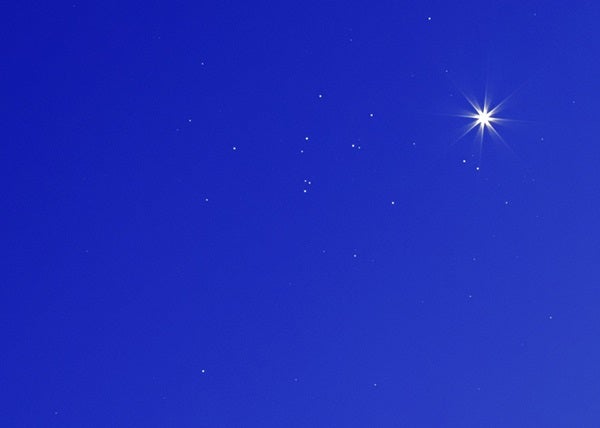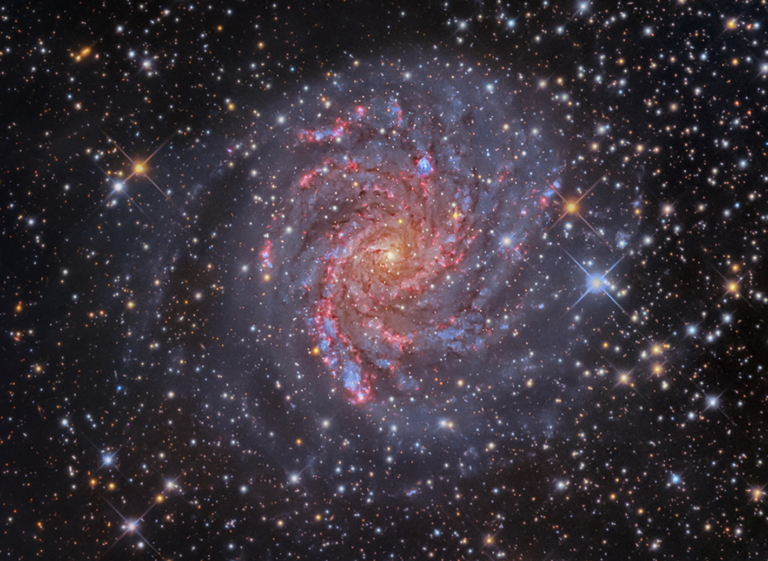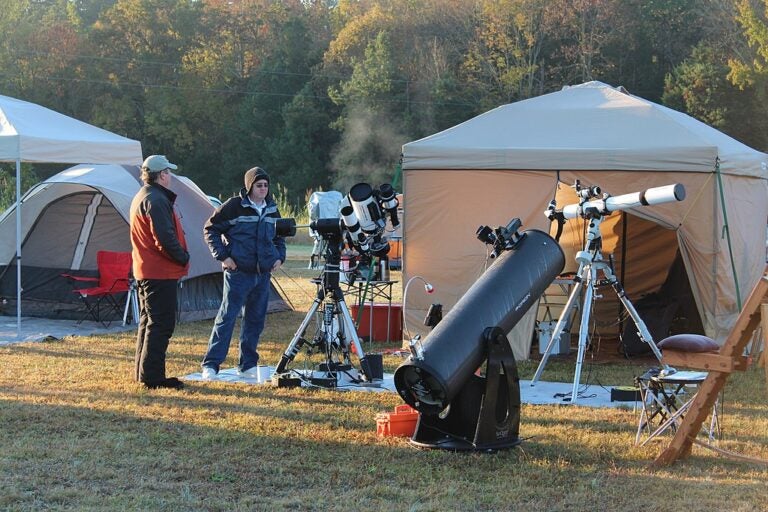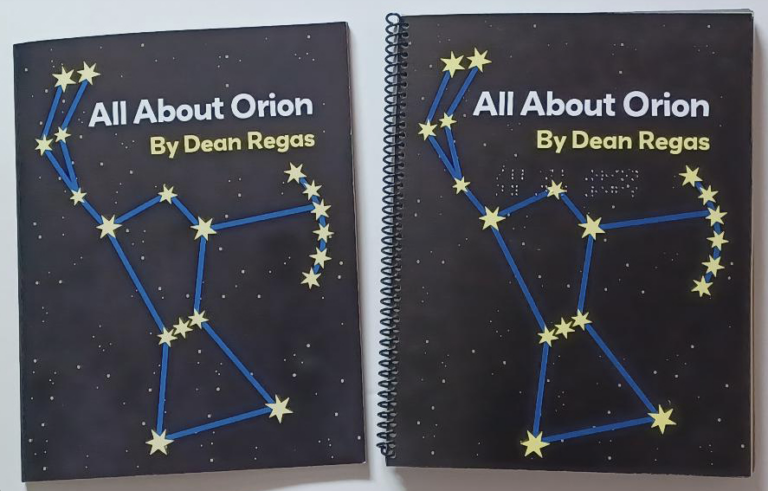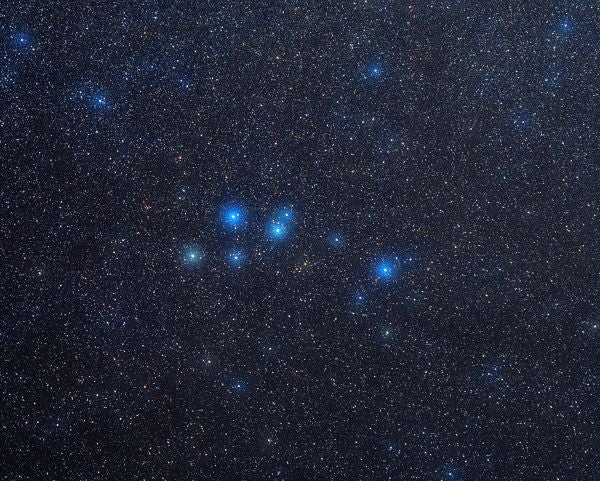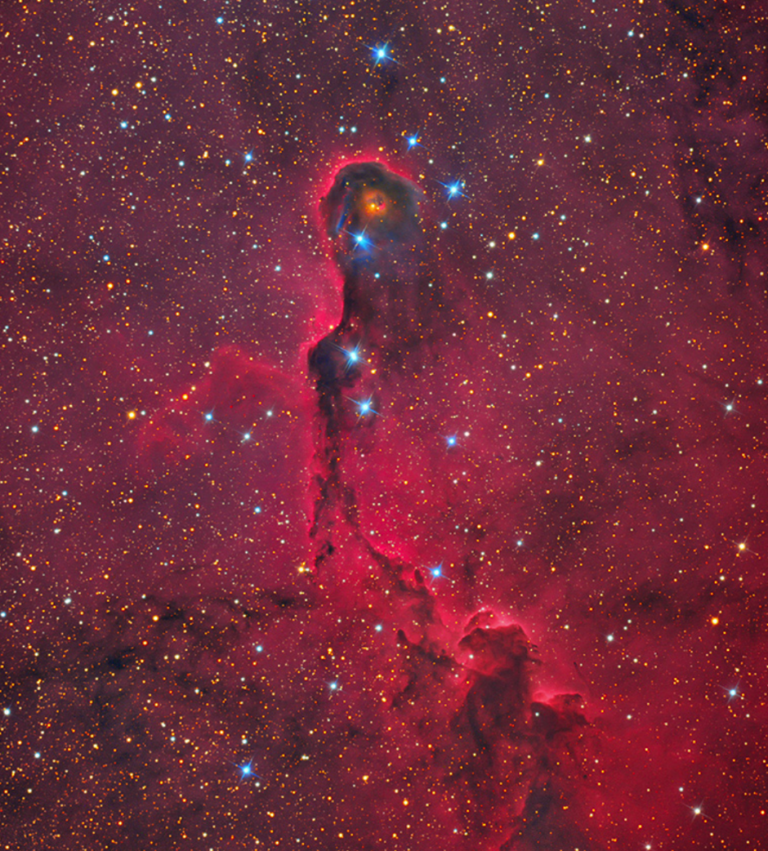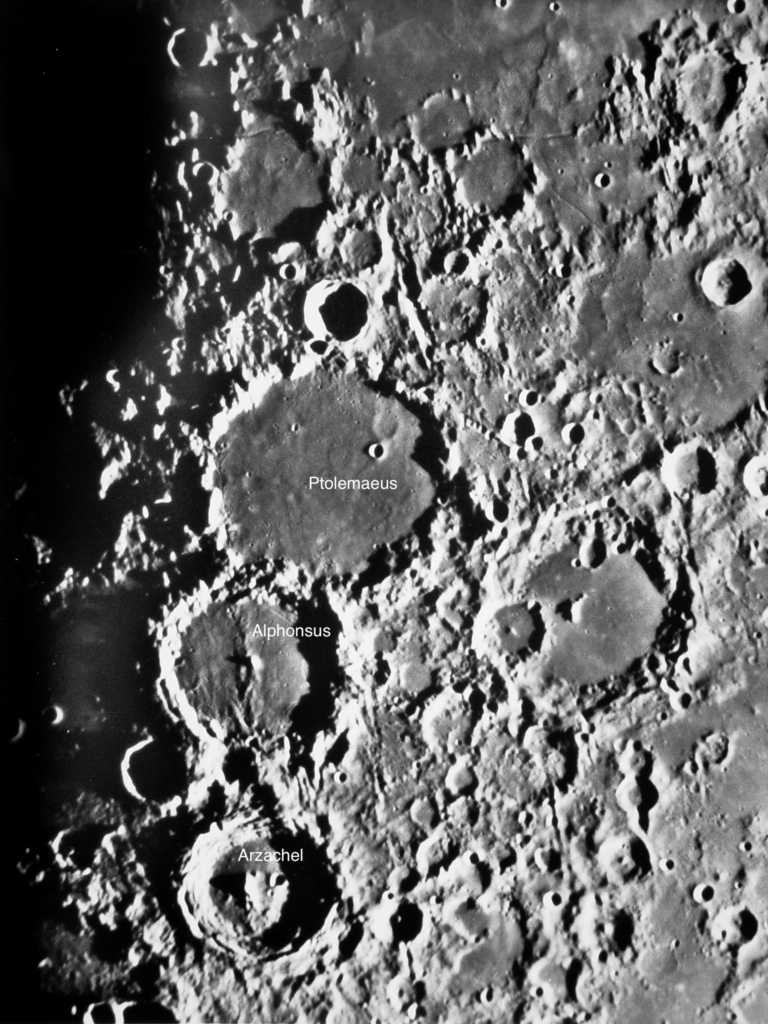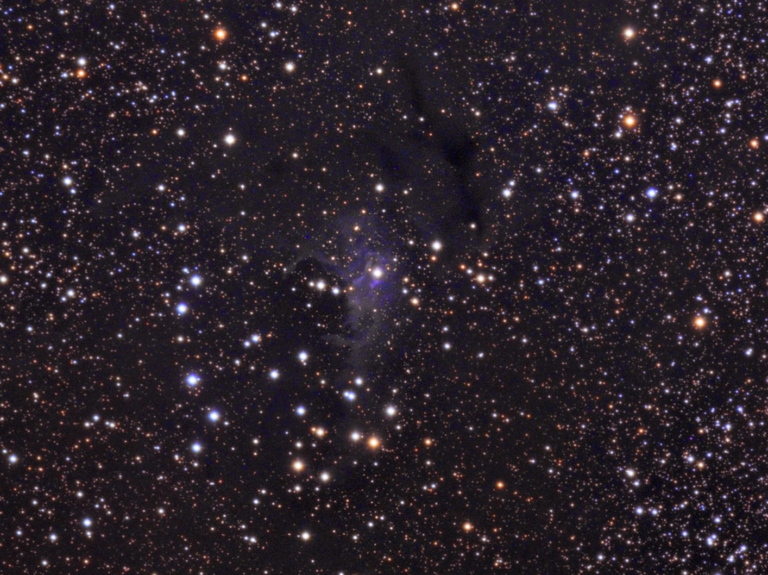M44 is one of the heavens’ largest, brightest, and nearest open star clusters — a wonder accessible to stargazers of all skill levels. This attractive swarm of stars is visible to the unaided eye as a nebulous patch spread across 1° of sky, appearing like the elongated head of a comet passing through the heart of Cancer the Crab. Known throughout antiquity, 3rd-magnitude M44 outshines all the stars of Cancer by a full magnitude, making Cancer the only constellation in which a deep-sky object is more conspicuous than the constellation itself.
Ptolemy wrote that this mystifying mist was the “center of the cloud-shaped convolutions in the breast [of the Crab], called Praesepe.” One of the earliest monikers for the cluster, Praesepe is derived from the Latin word presepio, which means “manger,” referring to the straw-filled manger of the infant Christ. If M44 represents the straw, it is guarded by the two aselli (Latin for “donkeys”) — the 5th-magnitude Gamma (γ) and 4th-magnitude Delta (δ) Cancri.
Galileo first resolved M44 into a mass of 40 stars with his primitive telescope — a view similar to that through today’s handheld binoculars. But the grouping’s more popular name, the Beehive Cluster, comes to us from the English observer John Herschel, who, in his 1833 Treatise on Astronomy, tells us that the Praesepe resolves into a swarm of stars with an “ordinary night glass.” Thus, properly speaking, the Praesepe refers to the naked-eye view, while the Beehive refers to the telescopic view — which, through even the smallest of telescopes, reveals a swarm of nervous starlight.
M44, which is located some 515 light-years away, is a collection of at least 1,000 stars. Most are too dim to see; about 200 range in brightness from 6th to 14th magnitude, 80 of which are brighter than magnitude 10. Keen-eyed observers have resolved several of the brightest stars with their unaided eyes. The 600-million-year-old cluster stretches across 15 light-years of space.
Make sure to explore Astronomy’s full list of 101 cosmic objects you must see. New entries will be added each week throughout 2022.
To get the latest astronomical news and observing content delivered directly to your door, subscribe to Astronomy magazine today!

